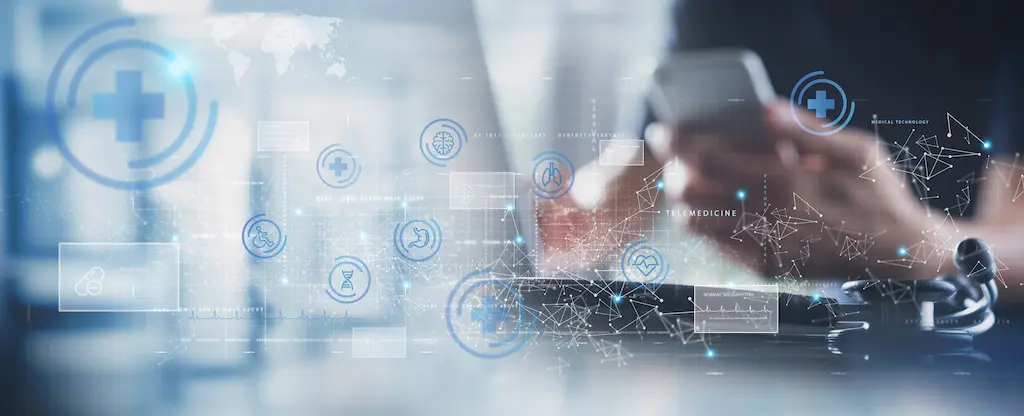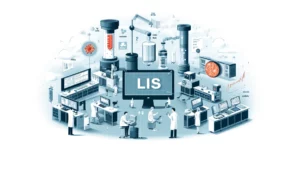
Best Practices for Managing a Medical Lab: Leveraging LIS for Efficiency and Accuracy
Managing a medical laboratory is a complex task that requires balancing accuracy, efficiency, and compliance with ever-evolving healthcare standards. As the healthcare landscape continues to change, lab managers face increasing pressure to deliver faster, more accurate results while managing costs and maintaining quality. One of the most effective tools in meeting these challenges is the implementation of a robust Laboratory Information System (LIS). This article explores best practices for managing a medical lab, with a particular focus on leveraging LIS to enhance operations and improve patient care.
Understanding LIS and LIMS in the Medical Laboratory Context
At the heart of modern medical laboratory management are two critical systems: Laboratory Information Systems (LIS) and Laboratory Information Management Systems (LIMS). While often used interchangeably, these terms refer to slightly different concepts:
LIS (Laboratory Information System) is specifically designed for medical laboratories, focusing on patient-centric data and clinical workflows. It manages patient records, test orders, and results, interfacing directly with medical lab equipment to automate data collection and reporting.
LIMS (Laboratory Information Management System), on the other hand, is a broader term that encompasses systems used in various types of laboratories, including research and industrial settings. While a LIMS can be used in a medical context, it may not have all the healthcare-specific features of a dedicated LIS.
For medical laboratories, an LIS is typically the more appropriate choice, as it’s tailored to the unique needs of clinical settings. These systems play a crucial role in streamlining lab work, enhancing accuracy, and improving overall efficiency in medical laboratory operations.
If you want to learn more about the key differences between LIS and LIMS, you can find information here.
Key Benefits of Implementing LIS in Medical Laboratories
Implementing a well-designed LIS can transform the operations of a medical laboratory in several ways:
Streamlining lab work and analysis processes:
An LIS automates many routine tasks, from sample tracking to result reporting. This automation reduces manual data entry, minimizes errors, and allows lab technicians to focus on more complex analytical tasks.
Improving accuracy and reducing errors:
By eliminating manual data transcription and providing built-in quality control checks, an LIS significantly reduces the risk of errors in lab analysis and reporting.
Enhancing data management and accessibility:
LIS centralizes all laboratory data, making it easier to store, retrieve, and analyze information. This centralization facilitates better decision-making and allows for more comprehensive patient care.
Facilitating better communication:
An LIS can interface with other healthcare systems, enabling seamless communication between the lab, healthcare providers, and even patients. This improved communication leads to faster turnaround times and better-coordinated care.
Best Practices for Implementing and Utilizing LIS
To maximize the benefits of a Laboratory Information System, consider the following best practices:
Choosing the right LIS for your medical laboratory:
- Assess your lab’s specific needs, considering factors like test volume, types of analyses performed, and existing workflows.
- Look for systems that offer flexibility and scalability to accommodate future growth.
- Ensure the LIS can integrate seamlessly with your current medical lab equipment.
Integration with existing medical laboratory equipment:
- Work closely with both LIS and equipment vendors to ensure compatibility.
- Implement middleware solutions if necessary to facilitate communication between diverse systems.
- Regularly update and maintain integrations to ensure continued compatibility as equipment and software evolve.
Training staff on LIS usage:
- Develop a comprehensive training program that covers all aspects of the LIS.
- Provide ongoing support and refresher courses to ensure staff remain proficient as the system updates.
- Encourage a culture of continuous learning and improvement in LIS utilization.
Ensuring data security and compliance:
- Implement robust security measures to protect sensitive patient data.
- Stay informed about relevant regulations (e.g., HIPAA in the US) and ensure your LIS helps maintain compliance.
- Regularly audit your system for security vulnerabilities and compliance issues.
Optimizing Lab Operations Beyond LIS
While an LIS is crucial, it’s just one part of effective medical laboratory management. Other key areas to focus on include:
Efficient management of medical laboratory equipment:
- Implement a regular maintenance schedule for all equipment.
- Keep detailed records of equipment performance and maintenance.
- Plan for timely upgrades or replacements to avoid disruptions in lab work.
Standardizing procedures for lab analysis:
- Develop and maintain detailed standard operating procedures (SOPs) for all lab processes.
- Regularly review and update these procedures to reflect best practices and technological advancements.
- Ensure all staff are trained on and adhere to these standardized procedures.
Quality control measures:
- Implement a comprehensive quality management system.
- Regularly perform internal quality checks and participate in external quality assessment programs.
- Use data from your LIS to identify trends and areas for improvement in lab performance.
Future Trends in Medical Lab Management
As technology continues to evolve, several trends are shaping the future of medical laboratory management:
- Artificial Intelligence and Machine Learning are being integrated into LIS to improve diagnostic accuracy and efficiency.
- Cloud-based LIS solutions are becoming more prevalent, offering greater flexibility and accessibility.
- Increased automation in medical lab equipment is reducing manual interventions and improving throughput.
- Point-of-care testing is growing, requiring LIS to manage and integrate data from diverse locations.
Measuring Success and Continuous Improvement
To ensure that your medical laboratory continues to operate at peak efficiency, it’s crucial to implement metrics for success and pursue continuous improvement:
Key Performance Indicators (KPIs):
- Establish relevant KPIs such as turnaround time, error rates, and test volumes.
- Use your LIS to track and report on these KPIs regularly.
- Set realistic targets and celebrate achievements to motivate staff.
Feedback Mechanisms:
- Implement systems to gather feedback from healthcare providers and patients.
- Regularly survey lab staff for insights on workflow improvements.
- Use this feedback to drive continuous improvement initiatives.
Benchmarking:
- Compare your lab’s performance against industry standards and best practices.
- Participate in professional networks to share knowledge and learn from peers.
- Use benchmarking data to identify areas for improvement and set new goals.
Addressing Challenges in Medical Laboratory Management
Even with best practices in place, lab managers may face various challenges:
Budget Constraints:
Budget plays a big part in any company – Medical labs are no exception. You need to prioritize investments based on the impact on patient care and operational efficiency while exploring cost-saving measures such as reagent management and workflow optimization. Consider the long-term ROI of technology investments, including LIS upgrades.
Regulatory Compliance:
One of the most important issues in any medical lab is regulatory compliance. As you know, you need to always stay informed about changing regulations in the medical laboratory field. Ensure your LIS is regularly updated to meet new compliance requirements and conduct regular internal audits to identify and address potential compliance issues.
Staffing and Skill Gaps:
No matter how sophisticated your lab is, in the end, it will always come to how good your team is. Develop strategies for recruiting and retaining skilled laboratory professionals.
Try to implement mentorship programs to transfer knowledge from experienced staff to newcomers and collaborate with educational institutions to create pipelines for new talent.
Conclusion
Managing a medical laboratory in today’s fast-paced healthcare environment requires a blend of technological savvy, operational excellence, and a commitment to quality patient care. By leveraging the power of Laboratory Information Systems and implementing best practices across all aspects of lab operations, managers can create highly efficient, accurate, and patient-focused medical laboratories.
The key to success lies in viewing the LIS not just as a tool, but as a central component of a larger ecosystem that includes medical lab equipment, skilled professionals, and standardized processes. By continually refining this ecosystem and staying abreast of emerging trends, lab managers can ensure their facilities remain at the forefront of medical diagnostics, contributing significantly to improved healthcare outcomes.
As the field of medical laboratory science continues to evolve, so too must the practices of those who manage these critical facilities. The labs that thrive will be those that embrace innovation, prioritize efficiency and accuracy, and never lose sight of their ultimate purpose: providing vital diagnostic information to support patient care.




